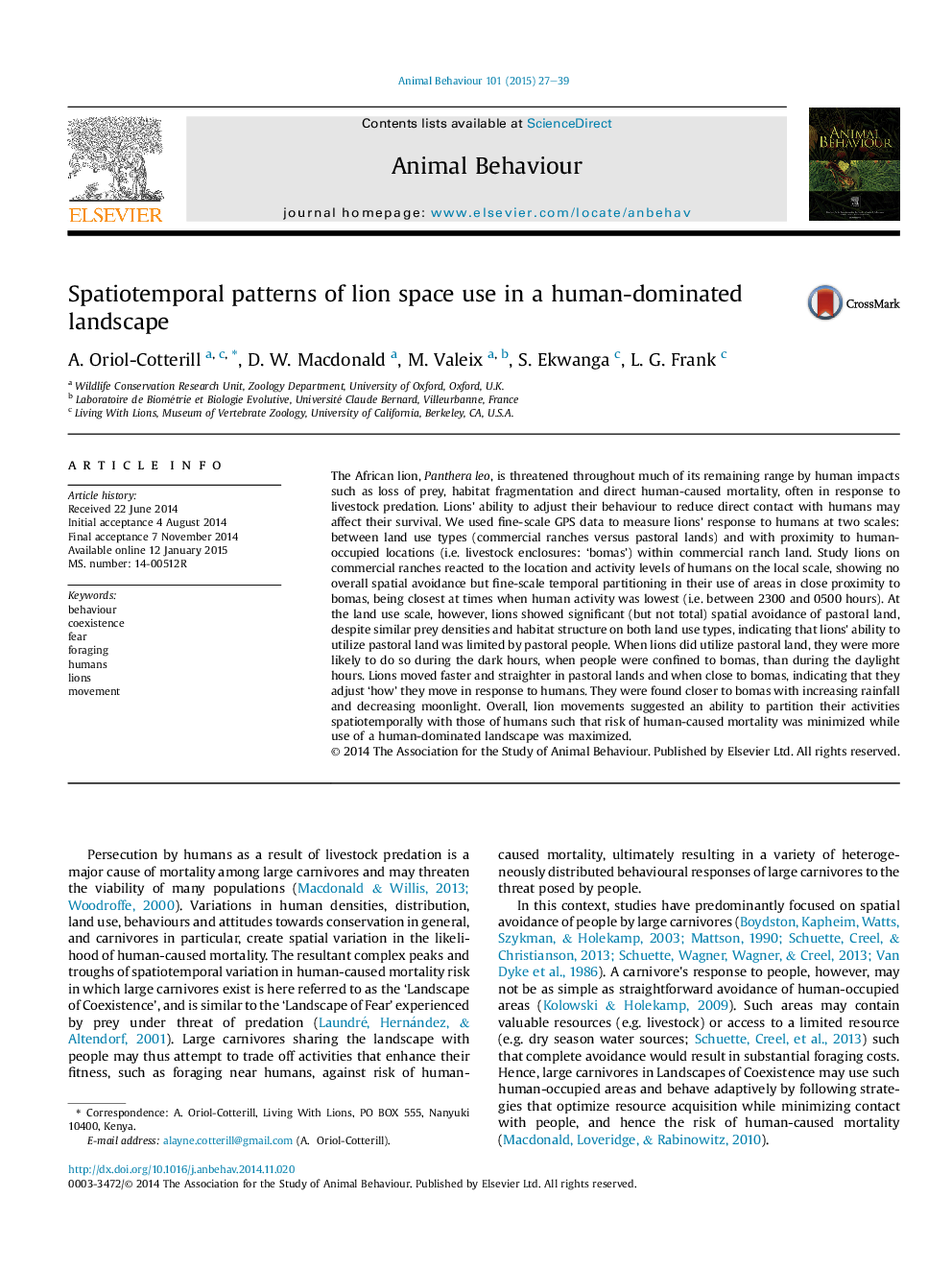| کد مقاله | کد نشریه | سال انتشار | مقاله انگلیسی | نسخه تمام متن |
|---|---|---|---|---|
| 8490104 | 1552227 | 2015 | 13 صفحه PDF | دانلود رایگان |
عنوان انگلیسی مقاله ISI
Spatiotemporal patterns of lion space use in a human-dominated landscape
ترجمه فارسی عنوان
الگوهای اسپکتیومیومی فضای شیر استفاده از چشم انداز انسانی
دانلود مقاله + سفارش ترجمه
دانلود مقاله ISI انگلیسی
رایگان برای ایرانیان
کلمات کلیدی
رفتار - اخلاق، همزیستی، ترس، غذا خوردن انسان، شیرها، جنبش،
موضوعات مرتبط
علوم زیستی و بیوفناوری
علوم کشاورزی و بیولوژیک
علوم دامی و جانورشناسی
چکیده انگلیسی
The African lion, Panthera leo, is threatened throughout much of its remaining range by human impacts such as loss of prey, habitat fragmentation and direct human-caused mortality, often in response to livestock predation. Lions' ability to adjust their behaviour to reduce direct contact with humans may affect their survival. We used fine-scale GPS data to measure lions' response to humans at two scales: between land use types (commercial ranches versus pastoral lands) and with proximity to human-occupied locations (i.e. livestock enclosures: 'bomas') within commercial ranch land. Study lions on commercial ranches reacted to the location and activity levels of humans on the local scale, showing no overall spatial avoidance but fine-scale temporal partitioning in their use of areas in close proximity to bomas, being closest at times when human activity was lowest (i.e. between 2300 and 0500 hours). At the land use scale, however, lions showed significant (but not total) spatial avoidance of pastoral land, despite similar prey densities and habitat structure on both land use types, indicating that lions' ability to utilize pastoral land was limited by pastoral people. When lions did utilize pastoral land, they were more likely to do so during the dark hours, when people were confined to bomas, than during the daylight hours. Lions moved faster and straighter in pastoral lands and when close to bomas, indicating that they adjust 'how' they move in response to humans. They were found closer to bomas with increasing rainfall and decreasing moonlight. Overall, lion movements suggested an ability to partition their activities spatiotemporally with those of humans such that risk of human-caused mortality was minimized while use of a human-dominated landscape was maximized.
ناشر
Database: Elsevier - ScienceDirect (ساینس دایرکت)
Journal: Animal Behaviour - Volume 101, March 2015, Pages 27-39
Journal: Animal Behaviour - Volume 101, March 2015, Pages 27-39
نویسندگان
A. Oriol-Cotterill, D.W. Macdonald, M. Valeix, S. Ekwanga, L.G. Frank,
